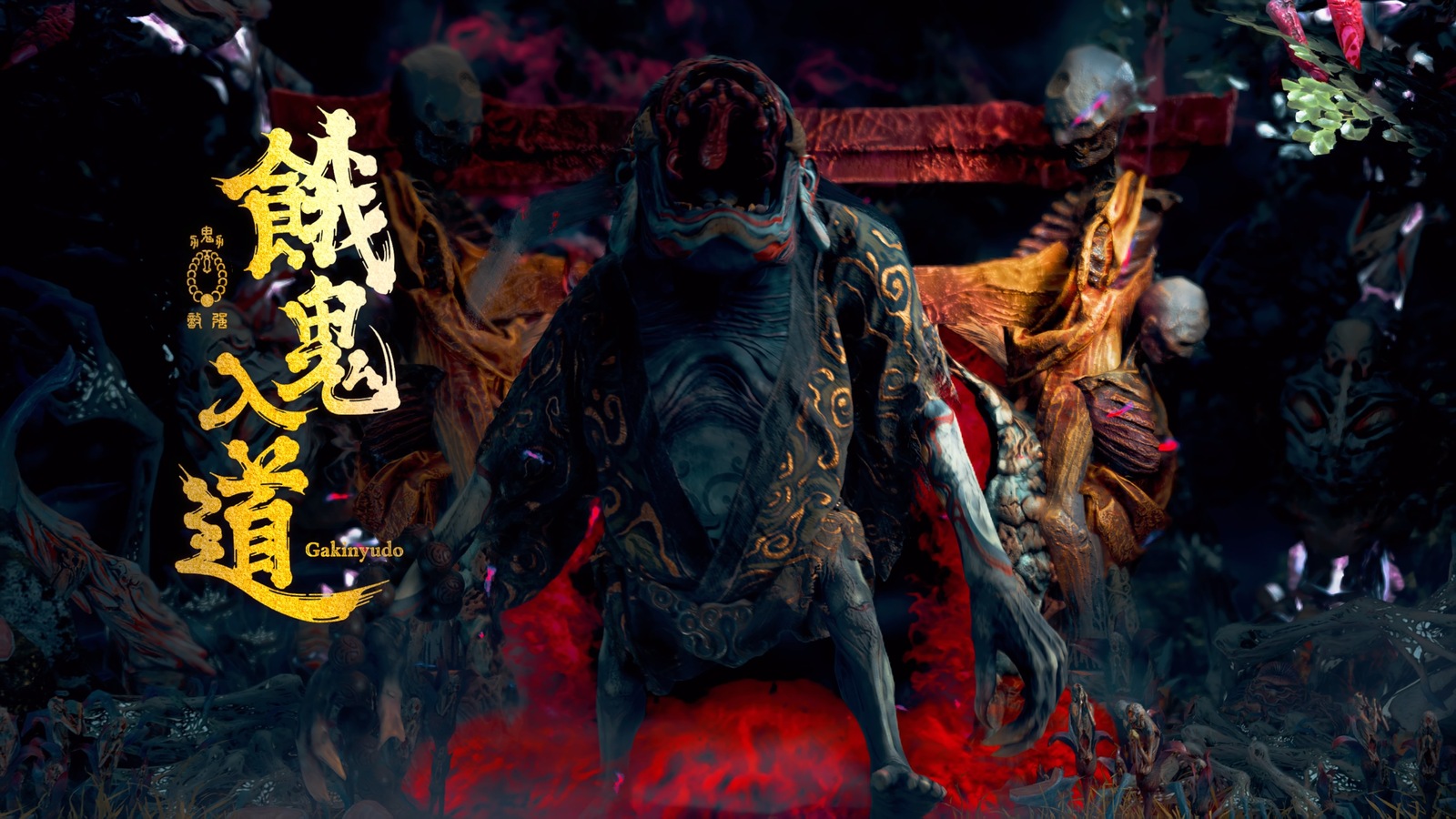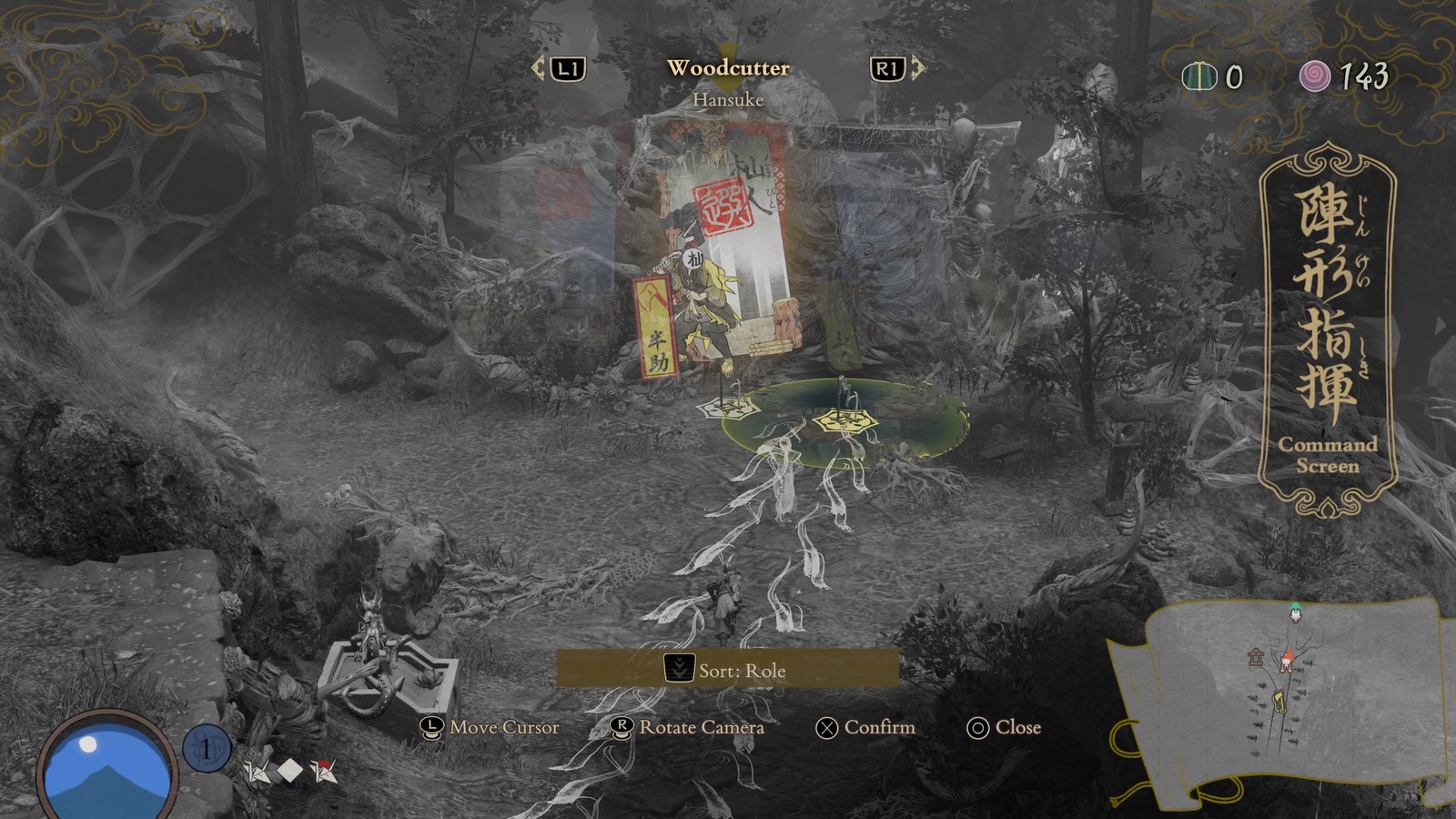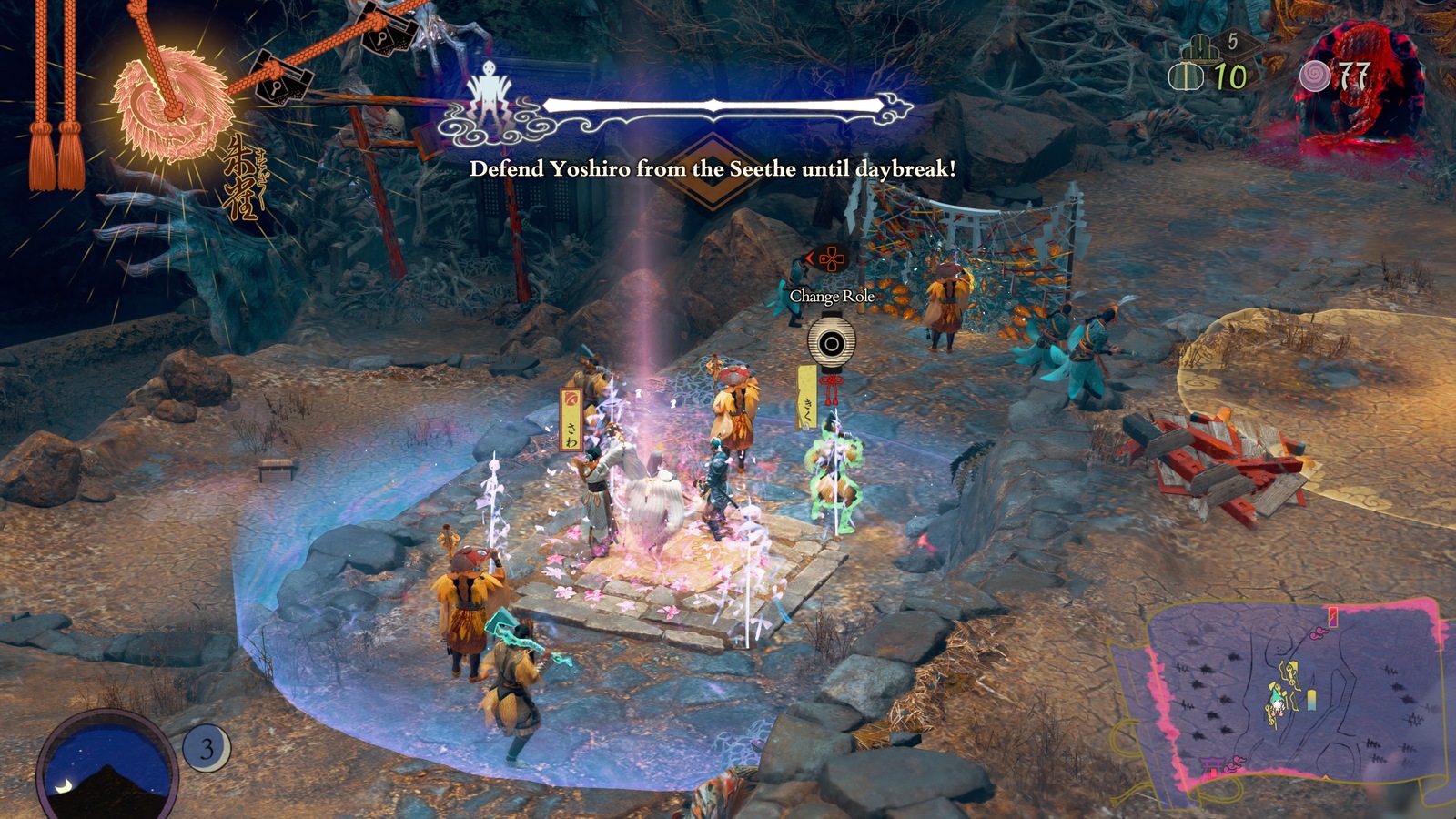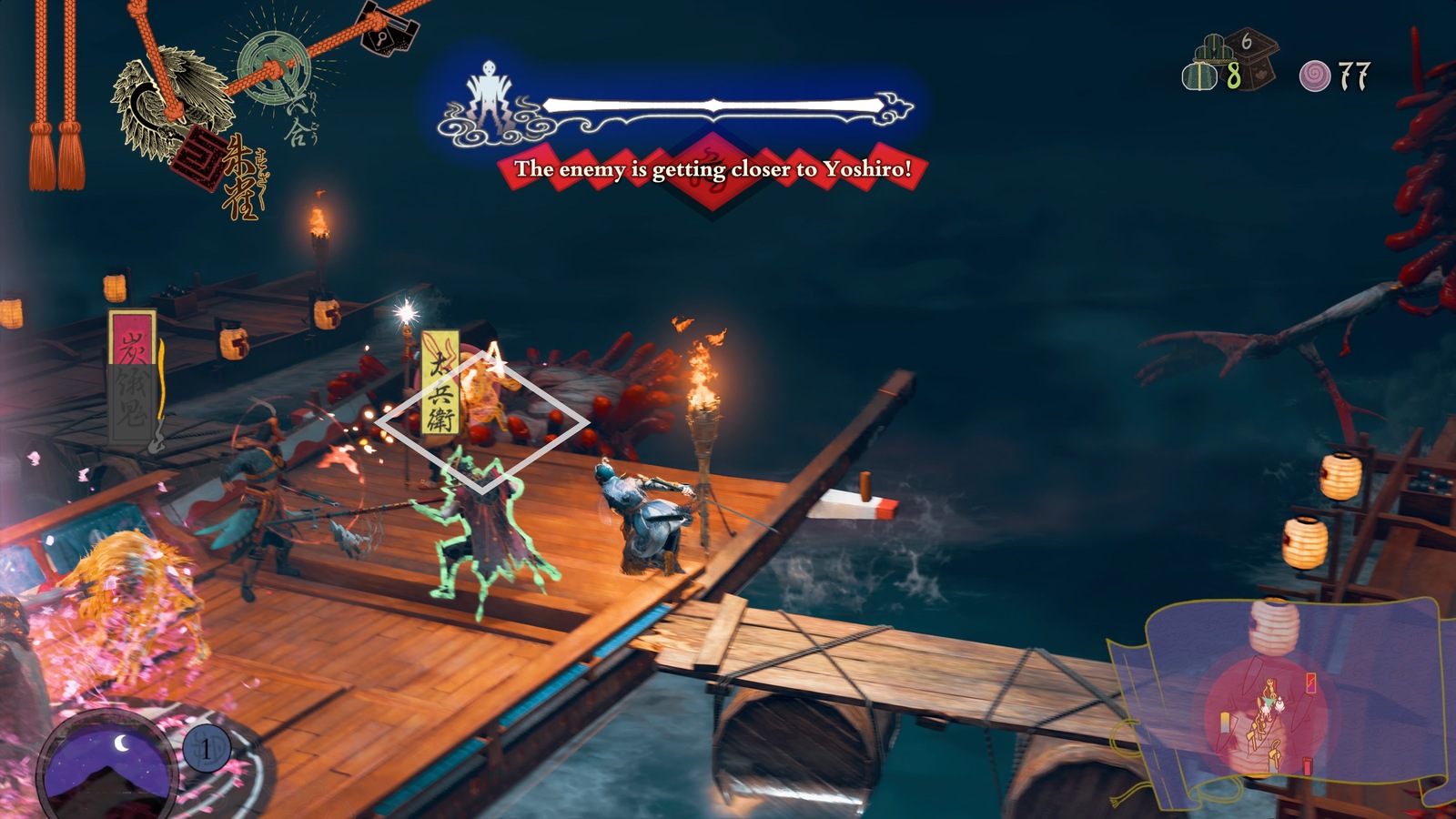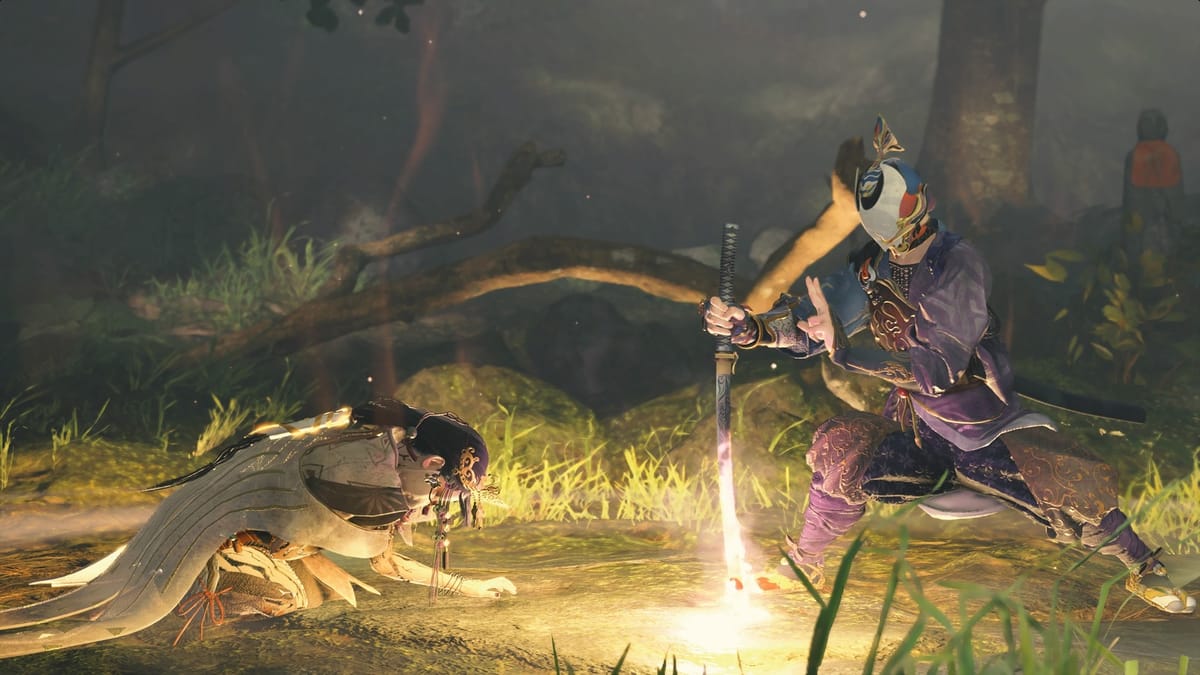
The world of Kunitsu-Gami: Path of the Goddess revolves around defense. You’ve got a goddess and you need to ensure she safely traverses her path. To accommodate this idea, Kunitsu-Gami models itself broadly around “tower defense” principles, which gives it the feel of a slower, more strategic experience. However, the game then injects those principles with directly controlled combat-focused game mechanics, taking the game in a more action-focused, offensive direction. This mixture, along with a few other select design choices, creates a strategy game that often feels less about thoughtful rumination and more about proactive simplification. Offense rules in Kunitsu-gami, for better and for worse.
Most stages involve getting your goddess from point A to point B, which would be simple if it weren’t so complicated. The game runs on a timer that splits the gameplay between day and night phases. During the day, you’re free to explore the map, carve a path to the end for your goddess, forage for crystals, and find villagers to help you in your cause. At night, however, monsters begin spewing forth from various points of the map in an attempt to murder both you and the object of your protection.
On the surface, all of Kunitsu-gami’s mechanics flow together well. You can’t make much progress without scavenging the map for crystals during the day. The crystals you collect can be used to create a path for the goddess or enlist villagers into a variety of different jobs with special abilities. Even if you grab all the crystals you can around the map and dump them entirely into getting the goddess through to the end of the stage, she’s not exactly in a hurry to physically get to her destination, so you won’t reach it in a day. She’ll stop moving the moment day turns to night, forcing you to fend off at least one wave of enemies. That means you must invest at least some of your crystals into specializing your villagers to fight back appropriately – your player character can fight back on his own, but he can’t be in two places at once, so some backup helps.
The core strategy of the game then lies in your ability to juggle time, currency, and positioning. Sometimes it may make sense to splurge your crystals on specialized villagers and put carving a path on the backburner. At other times you may purposely limit how far you carve your path even if it results in a time disadvantage, because it’s easier to defend your goddess at some points of the map versus others. The ever present timer bearing down on you combined with the weight of potential consequences for your decisions keeps the game exciting. All of the game’s core systems weave together in a way that makes the moment-to-moment decision making feel impactful.
Layered on top of these considerations are an abundance of smaller decisions that give the strategic depth more nuance. Each villager can assume one of a gradually expanding roster of specialties that suit different situations. Woodcutters fight better against grounded enemies while archers handle airborne ones, for example. As the game progresses the specializations fit increasingly niche situations, but the principle of wanting a well-balanced selection of soldiers remains consistent.
Numerous monsters called the Seethe stand in opposition to your platoon, and they act as the primary reason to change up your strategy. Seethe abilities range from being simple fodder to be slashed away, to giant monsters that soak up damage, to exploding if left unattended. These creatures are numerous and distinct, which is further emphasized by their strikingly varied visual designs. Seethe resemble the kinds of creatures you’d expect to see in the latest Resident Evil game, but with a noticeable twist of Japanese culture. The bosses in particular stand out as both horrifying and captivating to look at.
Different villagers pair better with some types of Seethe than others, so most of the strategy should come from placing the right people in the right places…however, I found that to only be true to an extent. The whole truth is more that you need the right-ish people in the right-ish places. The game isn’t picky about the details. Some types of villagers prove essential to a good defense, like the ones that can slow down enemy movements, while the ones that actually hit the enemies don’t matter all that much as long as you have someone that can get the job done.
There’s a looseness to the strategy in Kunitsu-Gami that is both its greatest strength and weakness. Several mechanics increase the game’s depth in one sense while undermining the core strategy of the game.
The character that you directly control, Soh, serves as one example. Soh controls similarly to any other modern day action game character, complete with different combos, defensive maneuvers, and super attacks. Due to these abilities, Soh is at least equal in value or greater than the entire rest of your group combined. You can easily shut down entire waves on your own, and likely will in the first few stages. Eventually the game will swarm you with more than Soh alone can handle, but even then your villagers can come across little more than a cleanup crew for whatever snuck through the gaps of your offense.
Unfortunately, Kunitsu-Gami reinforces that “clean up crew” treatment with its control setup. Generally, you order your villagers around by placing markers around the map while time in the game itself remains frozen. This system technically allows you to send your villagers all over the map to handle different spawn points and micromanage as needed. However, using such tactics often felt like the least efficient way to fight. The interface for moving units around can be clunky to the point that it’s hard to keep track of which villager is heading where, particularly if you have multiple of the same type. Further, you can’t really trust the villagers to wipe out an entire wave of Seethe from one direction on their own, as the villagers will accumulate a lot more damage without your help and some Seethe inevitably sneak past them anyway. It’s a lot of effort for questionable results.
Instead, the strategy that took me through basically the entire game was to build my villager formation entirely around the goddess. Everyone sits in a centralized area around her and covers her from any directions the Seethe may approach from. This plan carries some risk with it because if a Seethe gets past they have a clearer shot to the goddess, but it generally works well. Most importantly, it saves you the hassle of having to wrangle all of your villagers and Soh around too much.
It makes sense that this tactic would be so effective given the game’s “tower defense” concept, but it also robs the game of a lot of its depth. You don’t need to think too hard about villager type or where they’re placed when everyone hangs around the same area. As long as you balance out your units appropriately you’ll rarely run into any trouble. Each battle blends into a frenzy where the biggest decisions typically consist of which enemy spawn point should you send Soh to first and whether or not you should adjust your troops a little to the left.
Even then, depending on how you want to approach the game you don’t need to worry too much about those things either. Kunitsu-Gami also features an extensive upgrade system. Each villager class has multiple layers of upgrades, and even Soh’s arsenal can be expanded in several ways. On top of that, Soh can be equipped with multiple special moves to turn the tide of battle, along with trinkets that give extra bonuses. It all feels excessive. What little strategic value endures normally can often be completely vanquished with the right setup. Yet another way that the player can use offense to dull the core gameplay.
I don’t entirely mind that Kunitsu-Gami gives the player so much leeway. The flexibility creates opportunities for you to make all kinds of unit compositions viable or even some unique challenge runs. Strong customizability also allows for people who struggle more with the game to experiment with options to cut their way past a difficult section. The whole system just risks overwhelming a game that can already feel more simple than it probably should be.
All of that said, Kunitsu-Gami kept me engaged to the end by playing with its structure. Most levels introduce new environmental elements and traps for you to play around with. Some levels forgo the “typical” gameplay entirely with ideas like removing Soh from the battle or sticking everyone on boats. Boss fights do perhaps the best job out of everything in varying up the gameplay and emphasizing the power of different strategies. The game offers a surprising amount of variety, stretching its concept in all kinds of interesting ways.
While I found the game simple enough to reach the end, it also leaves plenty of room for mastery. Optional objectives encourage replaying stages (as often the goals are mutually exclusive or impossible to achieve the first time around) and trying out different strategies. An entire new game plus exists that adds even more challenges on top of that. As far as replay value goes, Kunitsu-Gami has plenty, although it can be grating to engage with it. During the daytime portions of the game you can speed up the timer to hop straight to the battles, but I often found myself wishing the speed up carried through at night too. When you have strong enough villagers and know what to expect, replays become an exercise in going through the motions.
Kunitsu-Gami: Path of the Goddess
Good
Kunitsu-Gami is a striking game both conceptually and visually, exactly the kind of experimental game that I wish we got more often. I just also wish it pushed itself a little further than it does. Offense runs the show in Kunitsu-Gami, which unfortunately undermines some of its potential strengths. Still, the game keeps itself engaging with its hybrid of action and strategy, as well as the courage to change up its structure.
Pros
- Interesting hybrid of action and strategy
- Core systems flow well together
- Strong visual design
- Encourages mastery
Cons
- Focus on offense dulls the strategy
- Replays can be tedious
- Giving villagers direction can be clunky


